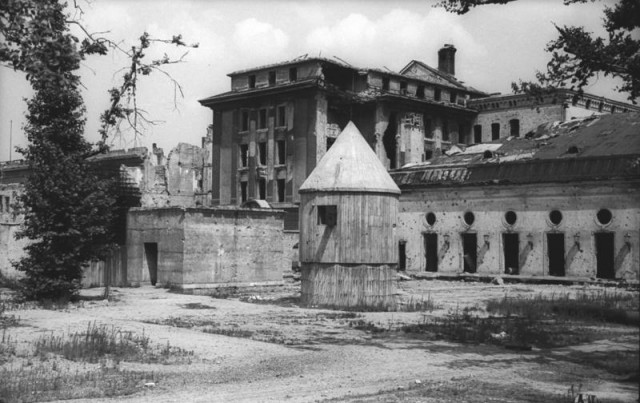The Spionage Museum in Oberhausen, north west Germany is to recreate Adolf Hitler’s World War Two Berlin bunker.
The ‘Führerbunker’ was a huge underground network of rooms built by Adolf Hitler’s Nazi regime. The bunker was built to ensure Hitler could direct and lead the Nazi war effort from underground should he need to.
Ingo Mersmann, the museum’s director, is the driving force behind the bunker’s recreation and intends to rebuild five of the rooms including Hitler’s private rooms, secretary’s office, radio room and doctor’s room. He is working with two historians and has used plans from the Federal Archives.
The rooms will be redecorated as near to the reality as possible, however Hitler’s portraits will not be hung from the walls. Instead empty black picture frames will be hung in their place.
The original bunker was located in Berlin between Potsdamer Platz and Brandenburg Gate. Built below the Third Reich’s Chancellery, the bunker was originally constructed as an air raid shelter for Hitler when he was in Berlin. As the Allies bombed the capital more and more, the shelter was gradually expanded, as the needs of Hitler and his close commanders dictated.
However, Hitler did not spend a great deal of actual time in Berlin during the war, instead preferring his accommodations at the Berghof in Obersalzberg.
The underground bunker became an elaborate compound of two parts – the Vorbunker and the Führerbunker. The Führerbunker was much lower underground than the Vorbunker and was built with reinforced concrete, four metres thick. It consisted of around 30 small rooms with exits into Chancellery buildings and the garden.
It is from here that Hitler directed the final months of his war effort from the beginning of 1945. By the end of April he had committed suicide and shortly after, the bunker was captured by Russian troops, the Daily News and Analysis reports.
Two years after Germany was taken by the Allies, the bunker was destroyed. Today an information board stands near the site of the bunker to inform people about what had laid beneath the ground. However, Germany’s policy towards Nazi locations is to destroy them as much as possible in order to prevent them becoming landmarks for neo-Nazis.
The museum is giving assurance that its exhibit will be completed sensitively stating that they do not want it to be an attraction for neo-Nazis, but an educational experience. Other such exhibitions have caused outrage, including when a wax work of Hitler was unveiled at Madame Tussaud’s in Berlin.
The Spionage Museum is focused on espionage and houses exhibits such as a recreation of Osama bin Laden’s hiding place and props from James Bond movies. It will use parts of the set built for Hitler movie ‘Downfall’ for its bunker recreation.
The bunker exhibit is expected to open in the summer.
